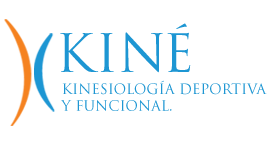Andrade R, Wik EH, Rebelo-Marques A, et al. Is the Acute: Chronic Workload Ratio (ACWR) Associated with Risk of Time-Loss Injury in Professional Team Sports? A Systematic Review of Methodology, Variables and Injury Risk in Practical Situations [published online ahead of print, 2020 Jun 22]. Sports Med. 2020;10.1007/s40279-020-01308-6.
Abstract
Background The acute: chronic workload ratio (ACWR) is an index of the acute workload relative to the cumulative chronic workloads. The monitoring of physical workloads using the ACWR has emerged and been hypothesized as a useful tool for coaches and athletes to optimize performance while aiming to reduce the risk of potentially preventable load-driven injuries.
Objectives Our goal was to describe characteristics of the ACWR and investigate the association of the ACWR with the risk of time-loss injuries in adult elite team sport athletes.
Data sources PubMed, EMBASE and grey literature databases; inception to May 2019.
Eligibility criteria Longitudinal studies that assess the relationship of the ACWR and time-loss injury risk in adult professional or elite team sports.
Methods We summarized the population characteristics, workload metrics and ACWR calculation methods. For each workload metric, we plotted the risk estimates for the ACWR in isolation, or when combined with chronic workloads. Methodological quality was assessed using a modified version of the Downs and Black scale.
Results Twenty studies comprising 2375 injuries from 1234 athletes (all males and mean age of 24 years) from different sports were included. Internal (65%) and external loads (70%) were collected in more than half of the studies and the session-rating of perceived exertion and total distance were the most commonly collected metrics. The ACWR was commonly calculated using the coupled method (95%), 1:4 weekly blocks (95%) and subsequent week injury lag (80%). There were 14 different binning methods with almost none of the studies using the same binning categories.
Conclusion The majority of studies suggest that athletes are at greater risk of sustaining a time-loss injury when the ACWR is higher relative to a lower or moderate ACWR. The heterogenous methodological approaches not only reflect the wide range of sports studied and the differing demands of these activities, but also limit the strength of recommendations.
Commentary
Lic. Diego Méndez (diegohmendez@gmail.com / ig: @DHMendez)
The following comment on the article published by Andrade et al, is only intended to highlight some key concepts enunciated by the authors, and which can often be misinterpreted and lead to unsupported decision-making.
ACWR as an isolated metric
The ACWR has come a long way since 2015, when Tim Gabbett and a group of colleagues found an association between this metric and the risk of non-contact injuries.1 Since then, many detractors have tried to discredit, stating that it does not predict who is going to be injured and that all it does is get athletes to train less.2,3
Let’s start by clarifying a couple of basic concepts before reaching a final conclusion:
- ACWR is not a measure of a person’s fitness or training level, but rather reflects how the load was progressed. An athlete may be training a lot and have a high ACWR or, conversely, he may be training very little and have an equally high ACWR. The purpose of this metric is to know the progression of the load and not the load itself. It allows us to know how much the training was in relation to what had been done, always speaking in relative terms.1
- The chronic training load (CTL) is the measure indicated to know capacity of an athlete. In general, it is the amount of load accumulated during a variable period of time that the professional in charge of the measurement will set and that, in general, will be 4 weeks. This metric has also been associated with the risk of injury, with a high CTL being protective.4-7
Attempting to give the ACWR the injury predictor label is utopian and even naive, knowing the multifactorial and complex nature of sports injuries.8 However, an association between an elevated ACWR with an increased risk of sustaining an injury have been documented. This link is strengthened or weakened in the presence or absence of the so-called ACWR Moderators, among which the CTL is one of the most influential.9
Keep in mind that CTL reflects capacity, and that a poorly trained athlete (low CTL) will clearly have a higher risk of injury when exposed to sports competition or demanding training. 10,11
Therefore, we could affirm that the combination between a high ACWR and a low CTL would be one of the scenarios that would most favor the appearance of an injury. Similarly, an athlete with a high CTL could better resist exposure to abrupt changes in load.12
In conclusion, isolated monitoring of the ACWR trying to keep it within «safe» values” is like trying to win a game of chess by looking only at your king and losing sight of the rest of the board. It is an important metric, but it requires context and is only useful when interpreted with other variables.12,13
Time-loss injuries
When we refer to sports injuries data collection, there are 4 basic measures that we all must know for the best interpretation of the results:
- Incidence. It is the number of new injuries in a period of time. 1000hs of exposure / player is usually used in the sports field.
- Prevalence. It is the amount of injuries existing in a certain number of players.
- Severity. It is the severity of the sports injury suffered. The number of days of training / competition missed is generally used. It starts counting from the day after the injury to the day before reinstatement.
- Burden. It is the product between incidence and severity. Reflects the «weight» of an injury. It is documented as the number of days lost (severity) / 1000hs of exposure (incidence).
An opposite example of equally high burden would be the case of the anterior cruciate ligament (ACL) injury, whose incidence is low but the severity is high (since it has many days lost from training); Contrary to hamstring muscle injury, which generally has a high incidence but does not require as many days outside of training.14
Are we missing something? Of course.
A sports injury refers to any complaint from an athlete, regardless of whether it requires medical attention or generates lost days of competition.15 There are injuries by repetitive mechanisms with low incidence, because new cases do not appear frequently; low severity, because they do not generate loss of days but only a decrease in performance; and therefore, low burden value. These are injuries that usually have a long evolution, are present in a large percentage of the sports population, but do not take them away from training, instead they influence their performance. Do you know which they are? Sure! Tendinopathies!
Tendinopathies have the characteristic of presenting a low incidence and a high prevalence (unless one uses cumulative incidence values). As they do not have a large number of days lost due to their presence, they are not usually documented in studies that take “time-loss” injuries, such as the systematic review on which this commentary applies.
In my opinion, more information is needed on the association between load metrics investigated in this study and tendinopathies. I consider these to be the sports injuries most associated with abrupt changes in load and, consequently, with the ACWR.
References
- Hulin B, Gabbett T, Lawson D, Caputi P, Sampson J; The acute:chronic workload ratio predicts injury: high chronic workload may decrease injury risk in elite rugby league players; Br J Sports Med 2015;0:1–7
- Lolli L, Batterham A, Hawkins R, Kelly D, Strudwick A, Thorpe R et al; The acute-to-chronic workload ratio: an inaccurate scaling index for an unnecessary normalisation process?; Br J Sports Med Month 2018
- Impellizzeri F, Woodcock S, McCall A, Ward P, Coutts A; The acute-chronic workload ratio-injury figure and its ‘sweet spot’ are flawed; Retrieved from osf.io/preprints/sportrxiv/gs8yu
- Gabbett T; The training—injury prevention paradox: should athletes be training smarter and harder?; Sports Med 2016;50:273–280
- Banister E, Calvert T, Savage M, et al. A systems model of training for athletic performance. Aust J Sport Med 1975;7:57–61.
- Banister E, Calvert T. Planning for future performance: implications for long term training. Can J Appl Sport Sci 1980;5:170–6.
- Banister E, Good P, Holman , et al. Modeling the training response in athletes. In: Landers DM. ed. The 1984 Olympic Scientific Congress Proceedings. Sport and Elite Performers. Champaign, IL: Human Kinetics, 1986:7–23.
- Bittencourt NFN, Meeuwisse WH, et al. Complex systems approach for sports injuries: moving from risk factor identification to injury pattern recognition—narrative review and new concept. Br J Sports Med 2016;50:1309–1314.
- Gabbett T, Nielsen R, Bertelsen M, Bittencourt N, Fonseca S, Malone S et al; In pursuit of the ‘Unbreakable’ Athlete: what is the role of moderating factors and circular causation?; Br J Sports Med Month 2018
- Malone S et al; Aerobic fitness and playing experience protect against spikes in workload: The role of the acute:chronic workload ratio on injury risk in elite Gaelic football; International Journal of Sports Physiology and Performance; 2016
- Malone S, Hughes B, Doran DA, et al. Can the workload-injury relationship be moderated by improved strength, speed and repeated sprint qualities? J Sci Med Sport 2018:S1440- 2440(18)
- Gabbett TJ; Debunking the myths about training load, injury and performance: empirical evidence, hot topics and recommendations for practitioners; Br J Sports Med Month 2018
- Hulin B, Gabbett T; Indeed association does not equal prediction: the never- ending search for the perfect acute:chronic workload ratio; Br J Sports Med Month 2018
- Bahr R, Clarsen B, Ekstrand J. Why we should focus on the burden of injuries and illnesses, not just their incidence . Br J Sports Med Month 2017
- International Olympic Committee Consensus Statement. Methods for Recording and Reporting of Epidemiological Data on Injury and Illness in Sports 2020 (Including the STROBE Extension for Sports Injury and Illness Surveillance (STROBE-SIIS)). The Orthopaedic Journal of Sports Medicine. 2020



